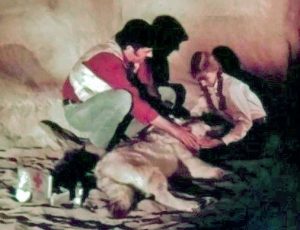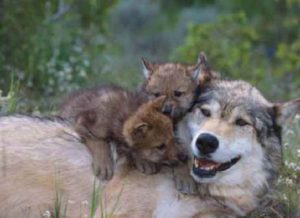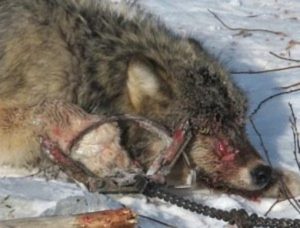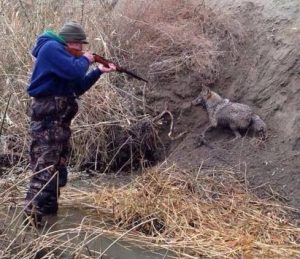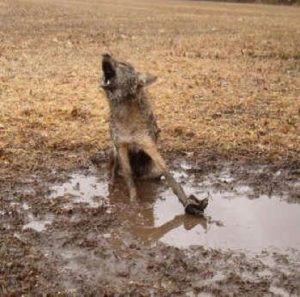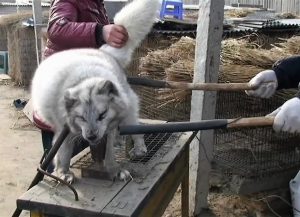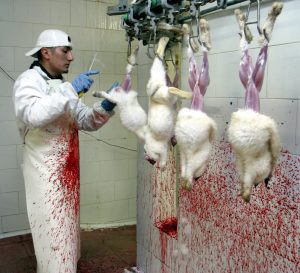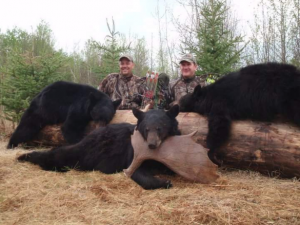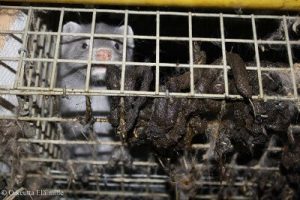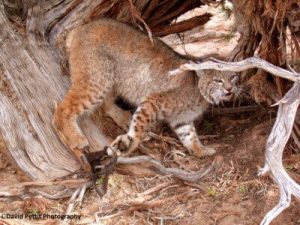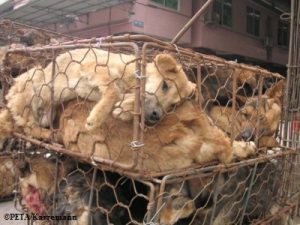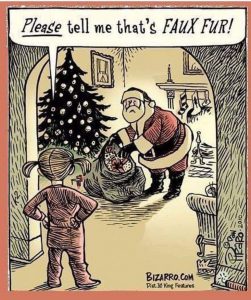 A mother searches through the forest for food. Her babies are back in the den, safe but hungry. She doesn’t like to leave them, especially in the cold weather, but she must in order to keep them fed. Spotting something in the brush she cautiously approaches for a better look.
A mother searches through the forest for food. Her babies are back in the den, safe but hungry. She doesn’t like to leave them, especially in the cold weather, but she must in order to keep them fed. Spotting something in the brush she cautiously approaches for a better look.
CRACK! CRUNCH! With the force of hundreds of pounds of pressure, the spring-loaded, six-inch steel jaws of a leg-hold trap snap shut, shattering the bones in her foot. The mother howls in pain and fear. The trap is anchored to the ground by a short chain and metal spike, so she can’t drag it away. Knowing her babies will die if she doesn’t return to the den, she tries to chew off her own leg to get free.
Elsewhere in the woods, a fur trapper is making his rounds in the woods, checking his traps. If the scavenging mother hasn’t died already from exposure, dehydration, and blood loss, he will dash out her brains with a club. A quicker death with a gun is out of the question – bullets put holes in the pelt. He stuffs her lifeless body in his bag and resets the trap for the next victim. Back in the den, the babies wait for their mother who is never coming home. For the sake of a pair of fur-lined gloves, they will soon be dead, too.
I urge you to take a minute and watch this video by fellow animal advocate Bill Maher. Isn’t it time we stopped thinking that fur (and feathers) are hip fashion statements, and see them for what they are, the remains of an animal, killed for human vanity?
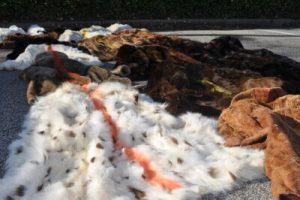 People admiring a fur coat or fur-trimmed garment in a store window or glossy magazine are likely unaware that animals like mink, fox, coyote, beaver, rabbits and raccoons are clubbed, electrocuted, and even skinned alive for their fur. Anal and genital electrocution is a common and agonizing method of slaughtering fur-bearing animals. To accomplish this, fur farmers stick an electric probe in the mouth and anus of a living, suffering fox or other animal. Try to imagine the terror felt by these poor animals. When the farmer turns on the electric current, the animal seizes uncontrollably until it dies an excruciating death. Fur farmers favor this method because the animals are electrocuted from the inside out, limiting damage to the animal’s pelt. New York is presently the only state in which this ghastly practice is illegal.
People admiring a fur coat or fur-trimmed garment in a store window or glossy magazine are likely unaware that animals like mink, fox, coyote, beaver, rabbits and raccoons are clubbed, electrocuted, and even skinned alive for their fur. Anal and genital electrocution is a common and agonizing method of slaughtering fur-bearing animals. To accomplish this, fur farmers stick an electric probe in the mouth and anus of a living, suffering fox or other animal. Try to imagine the terror felt by these poor animals. When the farmer turns on the electric current, the animal seizes uncontrollably until it dies an excruciating death. Fur farmers favor this method because the animals are electrocuted from the inside out, limiting damage to the animal’s pelt. New York is presently the only state in which this ghastly practice is illegal.
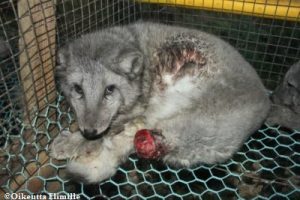 Eighty-five percent of the fur industry’s “harvest” comes from animals held captive on factory farms, where they are crammed into severely crowded, filthy wire cages, and often skinned alive. Mink are known to go insane inside these tiny wire cages; many undercover animal activists have filmed the poor creatures going round and round in circles for hours on end, making high-pitched screeching noises.
Eighty-five percent of the fur industry’s “harvest” comes from animals held captive on factory farms, where they are crammed into severely crowded, filthy wire cages, and often skinned alive. Mink are known to go insane inside these tiny wire cages; many undercover animal activists have filmed the poor creatures going round and round in circles for hours on end, making high-pitched screeching noises.
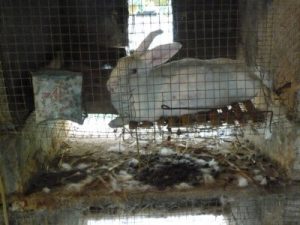 One billion rabbits are slaughtered each year so that their fur can be used for trim in clothing, craft items, or for lures in fly-fishing.
One billion rabbits are slaughtered each year so that their fur can be used for trim in clothing, craft items, or for lures in fly-fishing.
One-third of all fur sold in the US comes from animals killed in steel-jaw traps, such as the one described above. The huge conibear trap crushes an animal’s neck by applying 90 pounds of pressure per square inch, leaving the animal to suffer for up to eight minutes while he or she slowly strangles to death. These sadistic traps are set not only on land, but are also positioned at the bottom of shallow ponds to kill beavers who swim by building their homes or collecting aquatic plants to feed their families.
In China, more than two million cats and hundreds of thousands of dogs are bludgeoned, hanged, or bled to death, or simply skinned alive for their fur, which is then exported to the US.
I beg of you, if you or anyone you know still wears fur or fur trim, please let them know about how cruel the fur industry is. Faux fur is a compassionate and cruelty-free alternative for all seasons. Compassion: now that’s a hip fashion statement!
Peace for ALL the animals with whom we share this planet!

